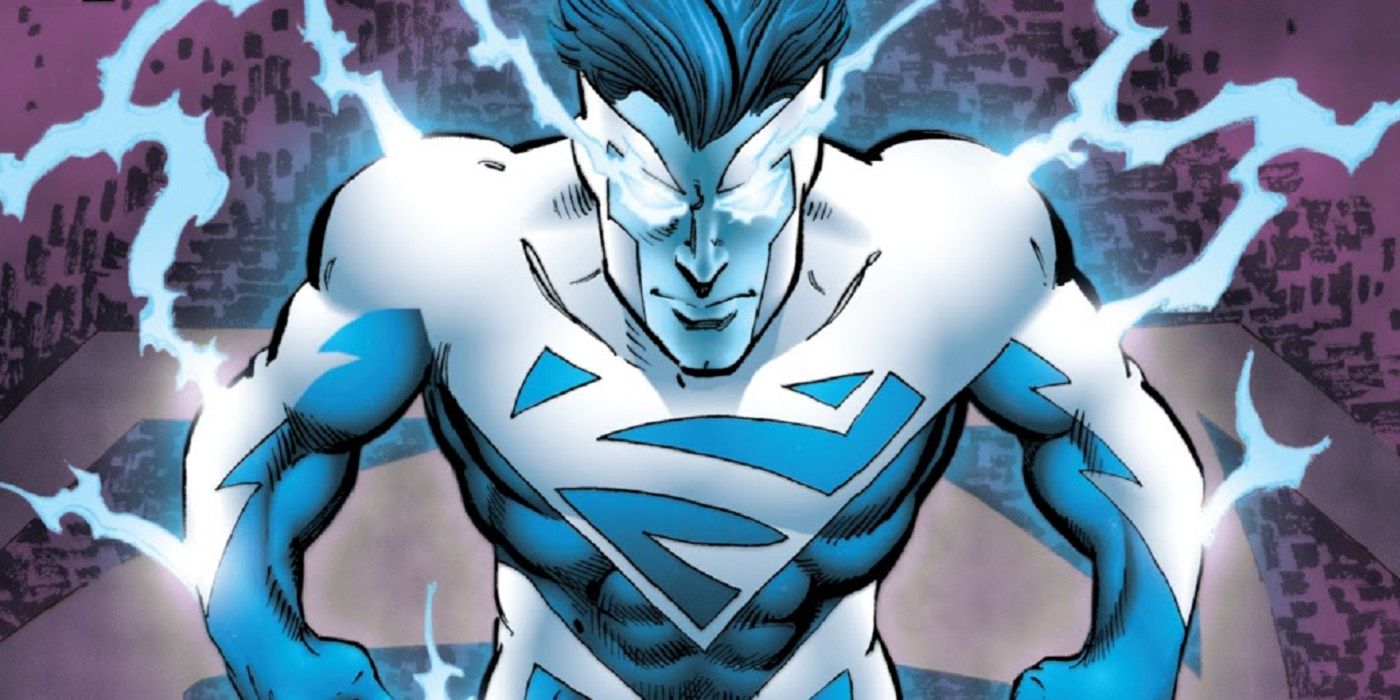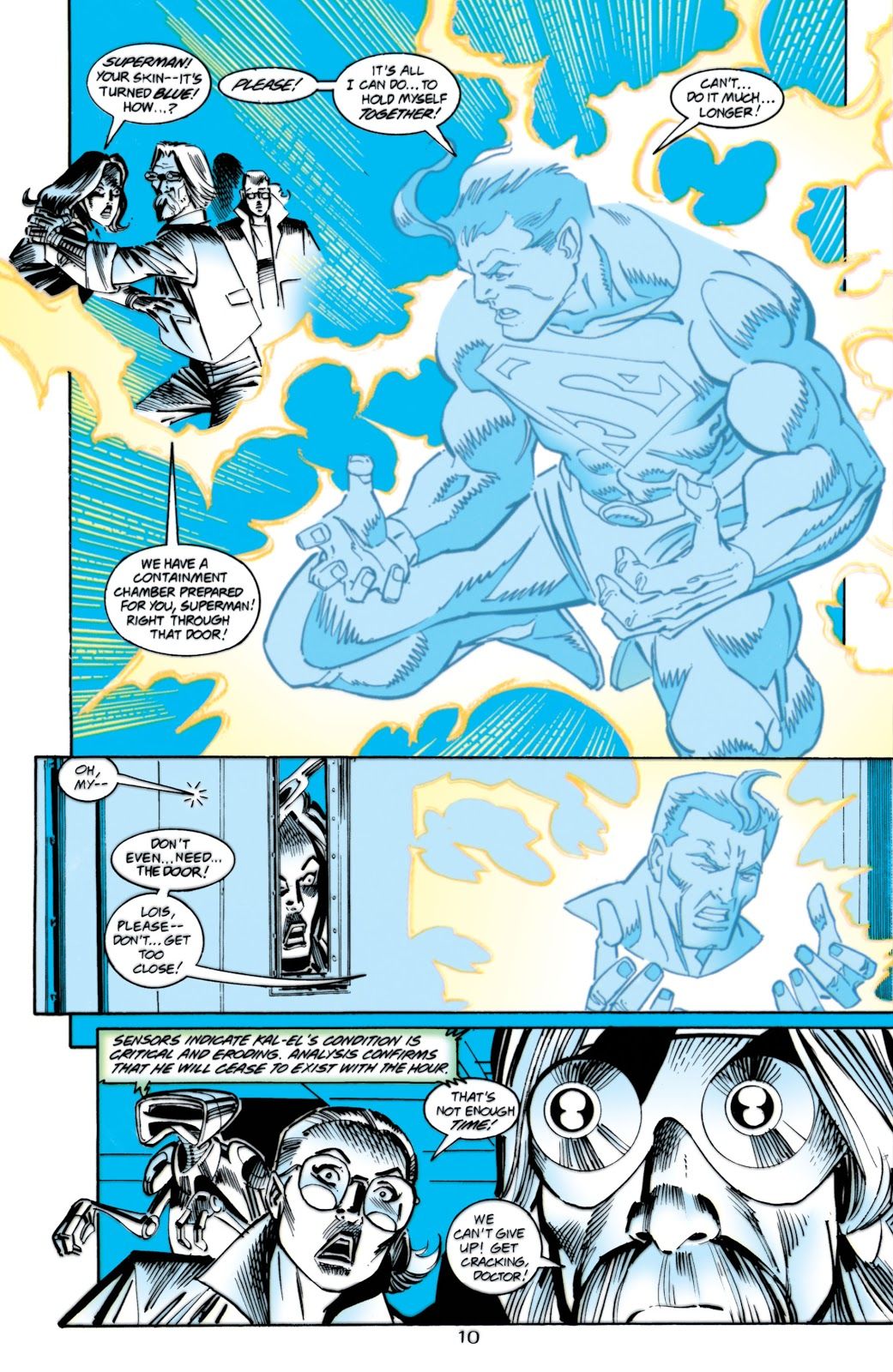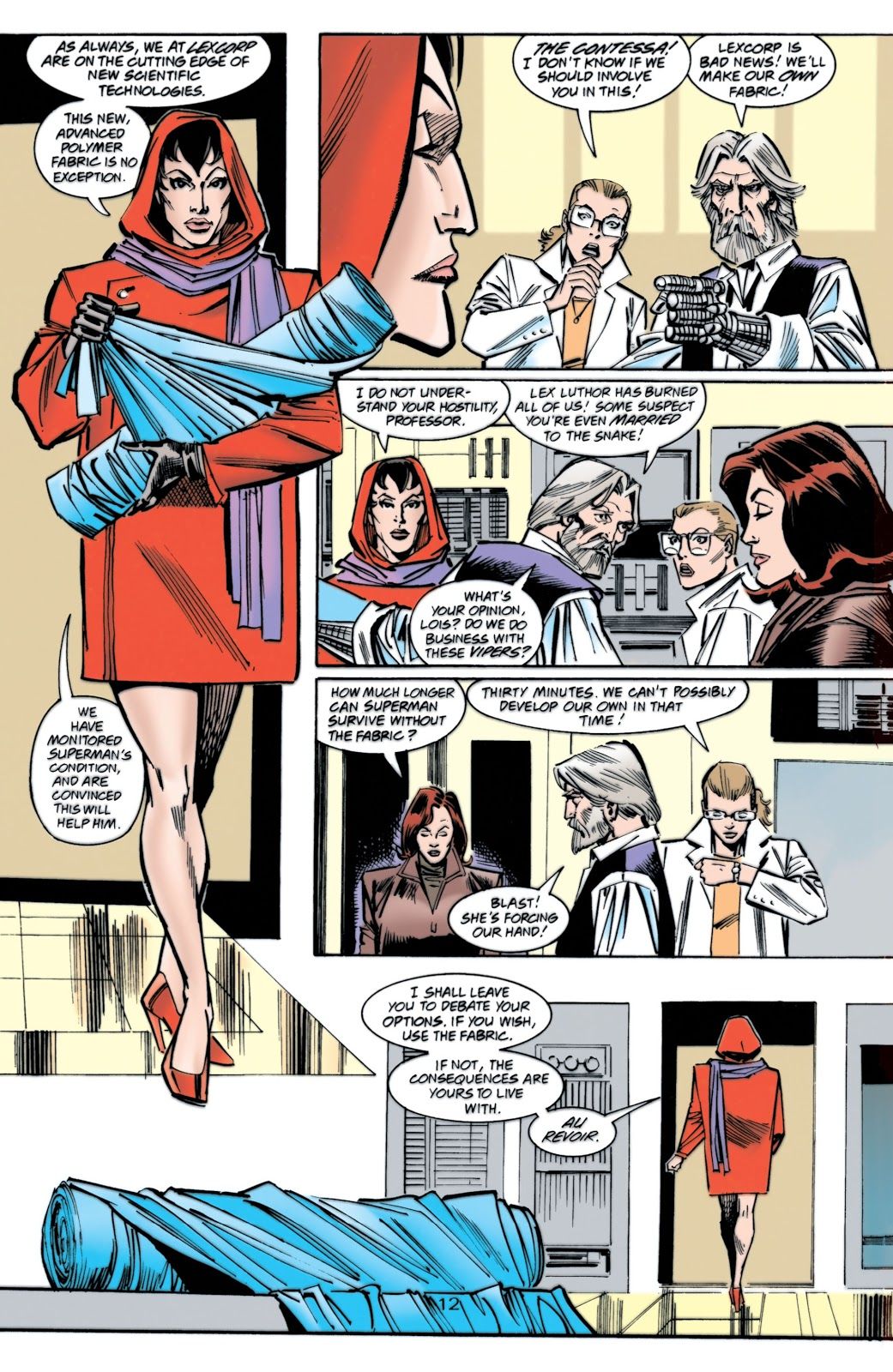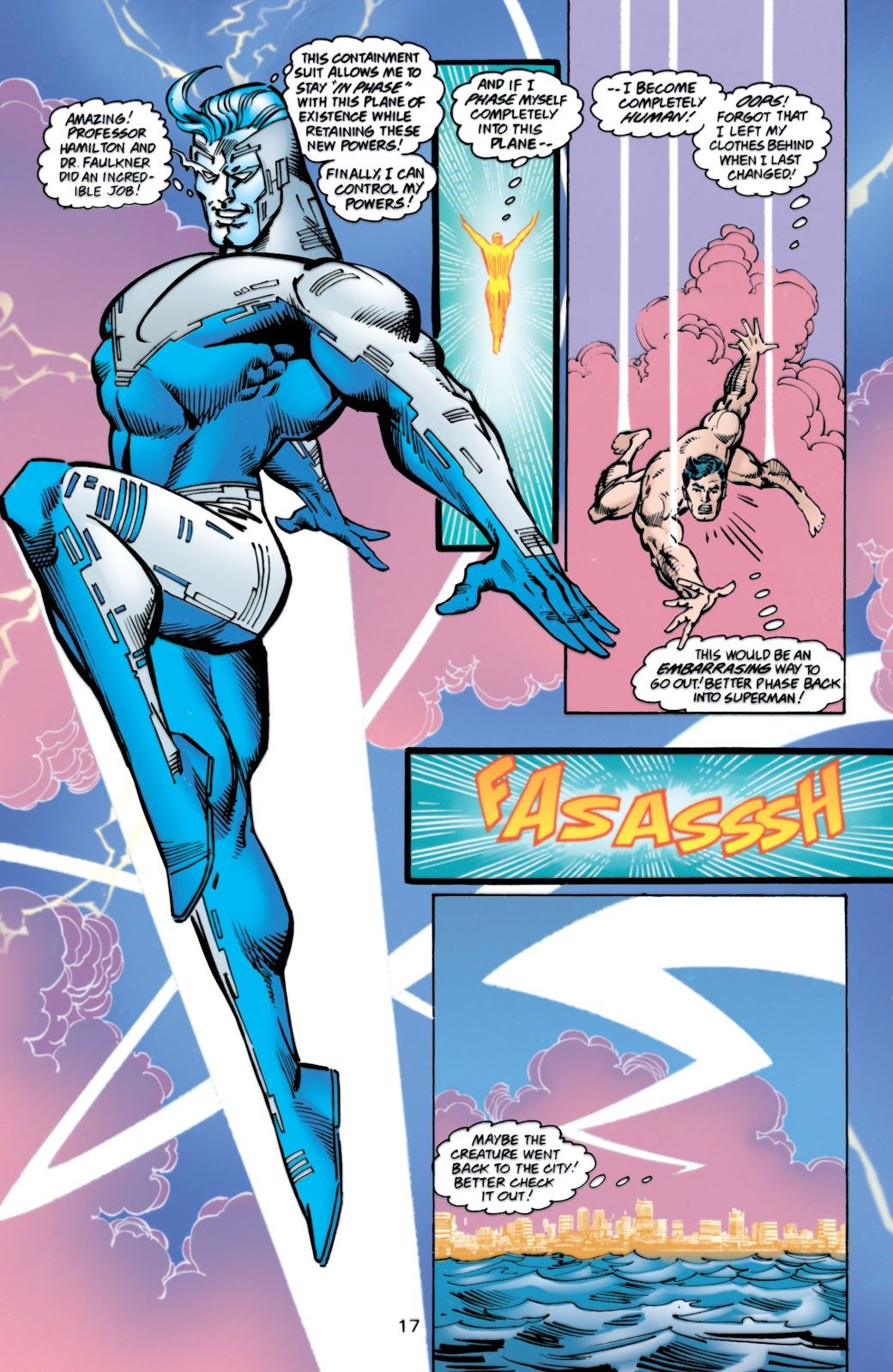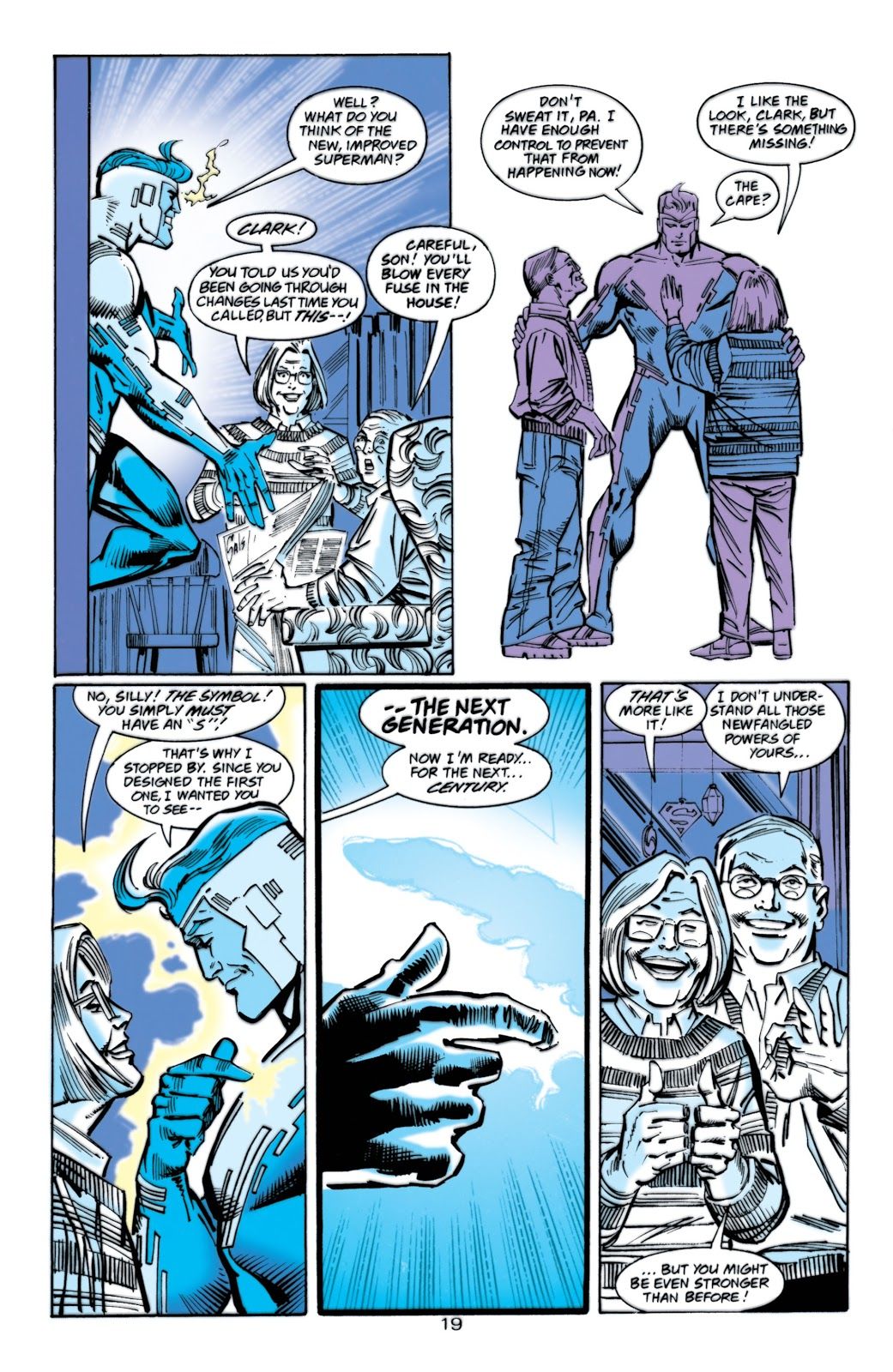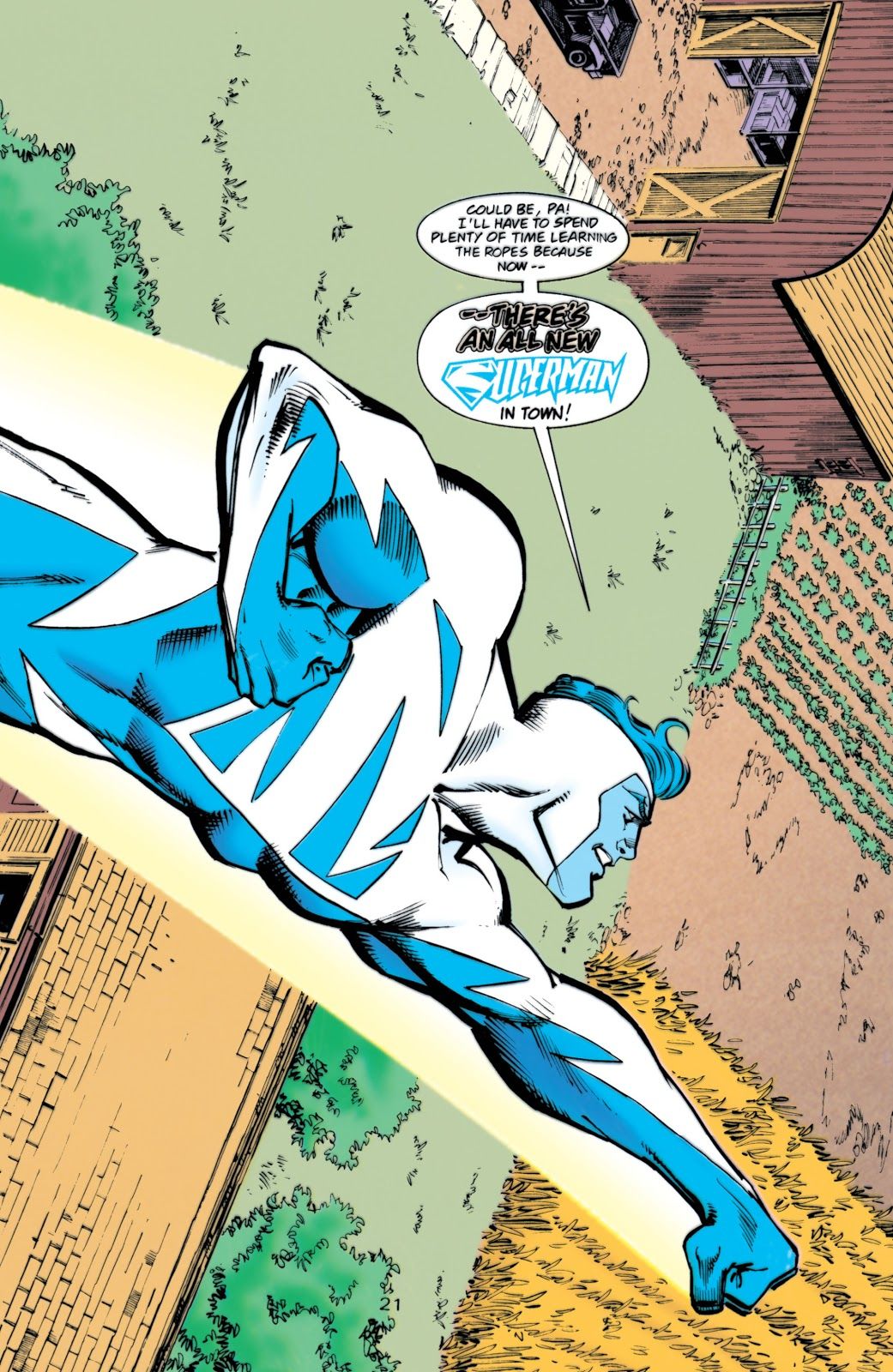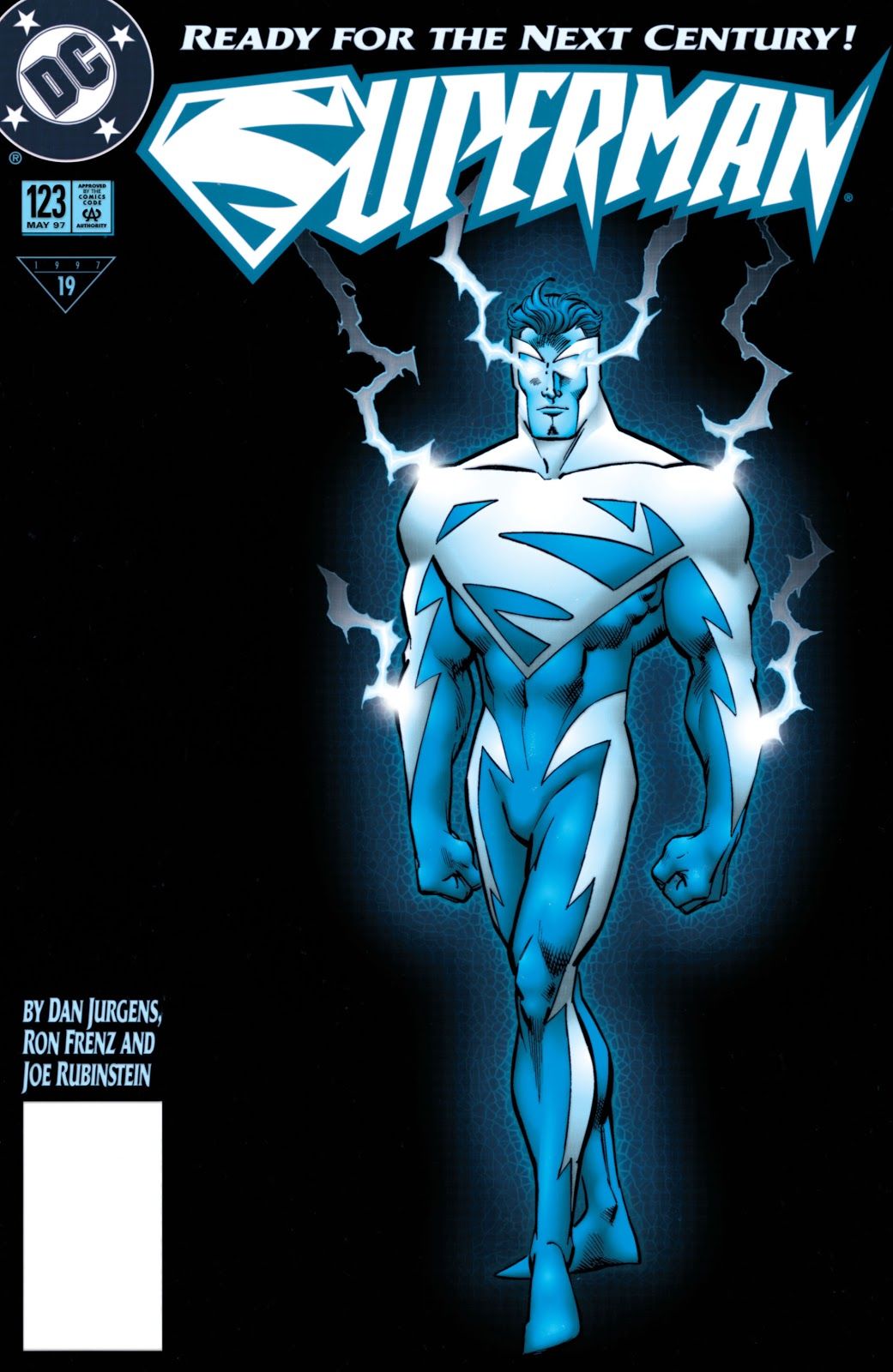Today, we look back to 25 years ago, when Superman turned blue and gained brand-new superpowers as part of a year-long storyline.
This is "Look Back," where every four weeks of a month, I will spotlight a single issue of a comic book that came out in the past and talk about that issue (often in terms of a larger scale, like the series overall, etc.). Each spotlight will be a look at a comic book from a different year that came out the same month X amount of years ago. The first spotlight of the month looks at a book that came out this month ten years ago. The second spotlight looks at a book that came out this month 25 years ago. The third spotlight looks at a book that came out this month 50 years ago. The fourth spotlight looks at a book that came out this month 75 years ago. The occasional fifth week (we look at weeks broadly, so if a month has either five Sundays or five Saturdays, it counts as having a fifth week) looks at books from 20/30/40/60/70/80 years ago.
We go back to March 1997 for Superman #123 (by Dan Jurgens, Ron Frenz, Joe Rubinstein and Glenn Whitmore), as Superman gains brand-new superpowers (and a whole new color!).
WHAT WAS THE BEHIND THE SCENES REASONING BEHIND SUPERMAN TURNING BLUE AND GAINING SUPERPOWERS?
Comic book fans who followed the Death of Superman news 30 years ago likely recall that the event was a result of what was called the "Superman Summits," where the creative teams of the Superman titles would come together for a meeting where they would plan out the next year's worth of Superman comic books. Due to a delay in having Superman and Lois Lane get married (a wedding was initially planned for Superman #75), the creators had to think of a new big event for Superman #75 and Jerry Ordway famously mused that they should just kill him. Now, once you've done that and you've done the Reign of the Supermen, the four new heroes who people think might have been Superman returned (before the Man of Steel actually returned to life), things get kind of hard when you try to think of events that can come close to that sort of thing. Superman on Trial, the Death of Clark Kent, none of those ideas hit quite like killing off Superman and temporarily replacing him in his four titles with four new superheroes. However, in 1997, while not really in that same ballpark, Superman turning blue was certainly a MAJOR event.
It was colorist Glenn Whitmore who had initially toyed with the idea of a tie-in to Superman Red/Superman Blue, a classic imaginary story where Superman split into two beings and helped basically turn the world into a utopia. That basic idea slowly mixed with some other ideas creators had at the time. Dan Jurgens recalled to Russ Burlingame, "We were always looking for big stories to do with Superman and those usually involved the idea of changing up the status quo in some way. We had discussed the general idea of a costume change even back when we brought [Superman] back from the dead, of course. That was part of the inspiration for the all black costume. So we kind of revived some of that here and also went with a change in powers, which we'd also talked about previously."
It was Karl Kesel who pushed the new power idea, which he also explained to Russ, "The idea had come into my mind to give Superman completely different powers. Not only would this be a fun monkey wrench to throw at Our Hero, but on a story level I saw lots of possibilities to show Superman struggling — something not easy to do or often seen with Superman. For the first time, he wouldn't know what he was capable of, he wouldn't know what could or couldn't hurt him. I liked the idea of showing Superman learning, pushing himself, sometimes failing because, well, that didn't work. It also gave us the opportunity to give fights with old enemies a new twist. In the end, though, the real point of the arc would be: it isn't the powers that make Superman who is is, it's Superman himself. I had no idea what those new powers might be — and I actually wanted other people to contribute that part so that more people were invested in the story. I believe Jon Bogdanove suggested energy powers."
So that's how the story came about BEHIND the scenes (thanks again to Russ, Dan and Karl for the great information), but what about in the comics themselves?
WHAT WAS THE COMIC BOOK REASONING BEHIND SUPERMAN TURNING BLUE AND GAINING SUPERPOWERS?
During the crossover event, Final Night, the Earth's Sun went out and eventually, Superman lost his sun-derived powers entirely. He actually got married to Lois Lane at a point where he had no superpowers. His powers were eventually kickstarted and were able to return by entering the sun itself, but instead he was OVERpowered and the energy he took in was messing with his abilities and eventually, at the start of Superman #123, he couldn't even remain corporeal - he was literally just turning into (blue) energy (this all happened while he was fighting a mysterious creature from Kandor named Scorn. I wrote about Scorn a while back).
Professor Emil Hamilton and Kitty Faulkner were desperately trying to think of some way to keep Superman's energy contained when the mysterious Contessa (the wife of Lex Luthor and the head of Lexcorp) showed up with a special suit that could contain Superman...
He was transferred into the suit and finally he could control his powers and even transform back to human (although he would be a literal human now, no superpowers in his human form)...
He went to visit his adopted parents and they reminded him that he still needed his "S"...
And so the new Superman was born!
The cover had a cool glow-in-the-dark Ron Frenz cover to it (Dan Jurgens did the non-glow in the dark cover. That's the image I used for the feature image for this article)...
Superman and his new powers became a year-long storyline that ended just in time for Superman's 60th anniversary in 1998, when he returned to normal. It was a cool storyline overall, albeit a BIT on the long side of things (I guess they really just wanted to sell the idea that maybe this WOULDN'T be a temporary thing).
If you folks have any suggestions for April (or any other later months) 2012, 1997, 1972 and 1947 comic books for me to spotlight, drop me a line at brianc@cbr.com! Here is the guide, though, for the cover dates of books so that you can make suggestions for books that actually came out in the correct month. Generally speaking, the traditional amount of time between the cover date and the release date of a comic book throughout most of comic history has been two months (it was three months at times, but not during the times we're discussing here). So the comic books will have a cover date that is two months ahead of the actual release date (so October for a book that came out in August). Obviously, it is easier to tell when a book from 10 years ago was released, since there was internet coverage of books back then.

